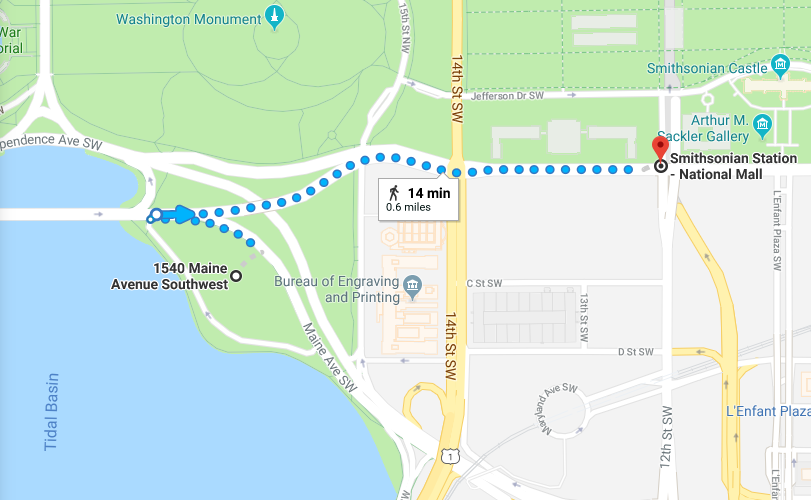National Cherry Blossom Festival Basic Info
/Cherry Blossoms with the Washington Monument in the background - CC Trevor Klatko
Springtime is definitely tourist season in Washington DC, and it's easy to understand why - the weather is often great for being outside and Washington DC's scenery is prettier than usual with blooming trees and flowers. If spring is peak tourist season, then the National Cherry Blossom Festival is the peak of the peak - when an estimated 1.5 million people flock to Washington DC to see these beautiful trees blossom. Washington DC is never quite as beautiful as when bathed in the pink glow of cherry blossoms.
To help you plan your visit, we are bringing you a series of articles that help you navigate Washington DC as you try to figure out where to go for the best views, how to get there, whats around, and what else to do while you are here. This article covers the basics on the National Cherry Blossom Festival. We will follow this up with tips, an itinerary, and other helpful articles.
Cherry Blossoms with the Jefferson Memorial in the background. CC - Victoria Pickering
Cherry Blossom Background and History
The 3,000 cherry blossom trees that dot Washington DC were a gift from the Toyko, Japan Mayor in 1912 to the city of Washington DC. Most of the cherry blossom trees at the Tidal Basin are of the Yoshino variety. However, there are other varieties as well, including the Kwanzan, which usually bloom ten days to two weeks after the Yoshino - extending the time one can appreciate the Washington DC cherry blossoms.
Peak Bloom
The peak bloom date is defined as the day when 70% of the Yoshino Cherry blossoms are open. Peak bloom varies annually depending on weather conditions. The most likely time to reach peak bloom is between the last week of March and the first week of April. Extraordinary warm or cool temperatures have resulted in peak bloom as early as March 15 (1990) and as late as April 18 (1958). Cherry blossom blooms only last a little while — which is part of what makes the peak bloom so special. The time from when those first early blooms appear on the trees to when they all begin to fall off the tree is only about two weeks.
Travelers who can’t make it to D.C. during the peak time have a small window in which they can play. For about two days before and two days after, the trees still appear like they’re in peak bloom.
Peak cherry blossoms bloom predictions: (Updated 3/25)
- National Park Service Forecast: April 8 - 12
- Washington Post Capital Weather Gang Forecast: April 8 - 12 (peak day of April 10)
Where are the Cherry Blossoms?
The majority of cherry blossoms are located near the Tidal Basin and along the shoreline of East Potomac Park, extending all the way to Hains Point. The preferred area for viewing he cherry blossoms is around the Tidal Basin - it is considered the most scenic and the eastiest to get to. Other places with Cherry Blossoms including Hains Point, the National Arboretum, Anacostia Park, Stanton Park and Oxon Run Park.
National Park Service National Cherry Blossom Festival Map
How to get to the Cherry Blossoms
As you can tell by the map above, there is not a lot of parking around the National Cherry Blossom Festival. This means that the best way to get there is either taking Metro (or a Bus) and walking, taking a ride-share like Uber or Lyft, or other alternative means of transportation (biking, bike-share, etc...)
Getting to the Cherry Blossoms by Metro
The National Cherry Blossom Festival is very accessible my Metro. The Smithsonian station, which is on the Orange, Blue, and Silver lines, is only a half mile from the tidal basin.
Getting to the Cherry Blossoms by Bus
Another good option to get down to the Tidal Basin is the DC Circulator - National Mall route. This bus runs from Union Station and along most of the length of the mall. It is a good way to get either to the Tidal Basin or directly to the Jefferson Memorial on the south side of the Tidal Basin. The DC Circulator only costs $1.
DC Circulator - National Mall Route.
For more information on the DC Circulator National Mall Route, please go to http://www.dccirculator.com/explore/where-we-go/national-mall/
Cherry Blossom Links
For further information on the National Cherry Blossom Festival, we have included a few links below.





